Abstract:
This paper deals with the design of single-stage differential low-noise amplifiers for ultra-wideband (UWB) applications, comparing state-of-the-art planar bulk and sili...Show MoreMetadata
Abstract:
This paper deals with the design of single-stage differential low-noise amplifiers for ultra-wideband (UWB) applications, comparing state-of-the-art planar bulk and silicon-on-insulator (SOI) FinFET CMOS technologies featuring 45-nm gate length. To ensure a broadband input impedance matching, the g_{m}-boosted topology has been chosen. Furthermore, the amplifiers have been designed to work over the whole UWB band (3.1–10.6 GHz), while driving a capacitive load, which is a realistic assumption for direct conversion receivers where the amplifier directly drives a mixer. The simulations (based on compact models obtained from preliminary measurements) highlight that, at the present stage of the technology development, the planar version of the circuit appears to outperform the FinFET one. The main reason is the superior cutoff frequency of planar devices in the inversion region, which allows the achievement of noise figure and voltage gain comparable to the FinFET counterpart, with a smaller power consumption.
Published in: IEEE Transactions on Circuits and Systems I: Regular Papers ( Volume: 56, Issue: 5, May 2009)
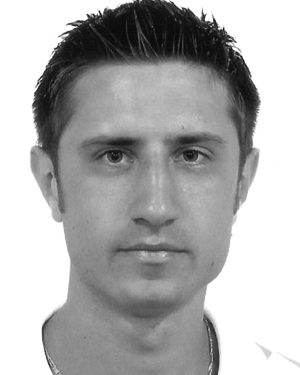
DIEGM, University of Udine, Udine, Italy
Davide Ponton (S'09) was born in Udine, Italy, in 1981. He received the B.Sc. degree and the M.Sc. degree (summa cum laude) form the University of Udine, Udine, in 2004 and 2006, respectively, both in electronic engineering, where he is currently working toward the Ph.D. in electronic engineering.
His research interests include the design of RF building blocks with novel CMOS technologies.
Davide Ponton (S'09) was born in Udine, Italy, in 1981. He received the B.Sc. degree and the M.Sc. degree (summa cum laude) form the University of Udine, Udine, in 2004 and 2006, respectively, both in electronic engineering, where he is currently working toward the Ph.D. in electronic engineering.
His research interests include the design of RF building blocks with novel CMOS technologies.View more
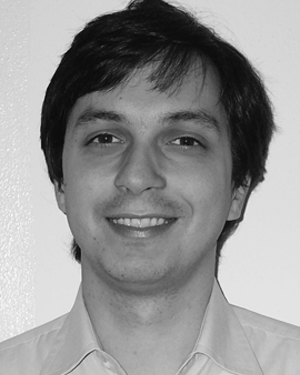
DIEGM, University of Udine, Udine, Italy
Pierpaolo Palestri (M'05) received the Laurea degree (summa cum laude) from the University of Bologna, Italy, in 1998, and the Ph.D. degree from the University of Udine, Udine, Italy, in 2003, both in electronic engineering.
In 1998, he joined the Department of Electrical, Management, and Mechanical Engineering, University of Udine, as a Research Assistant in the field of device simulation. From July 2000 to September 2001...Show More
Pierpaolo Palestri (M'05) received the Laurea degree (summa cum laude) from the University of Bologna, Italy, in 1998, and the Ph.D. degree from the University of Udine, Udine, Italy, in 2003, both in electronic engineering.
In 1998, he joined the Department of Electrical, Management, and Mechanical Engineering, University of Udine, as a Research Assistant in the field of device simulation. From July 2000 to September 2001...View more
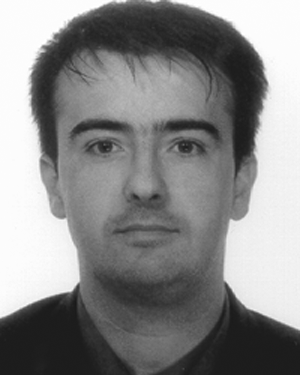
DIEGM, University of Udine, Udine, Italy
David Esseni (S'98–M'00–SM'06) received the Laurea degree and the Ph.D. degree in electronic engineering from the University of Bologna, Bologna, Italy, in 1994 and 1998, respectively.
In 2000, he was a Visiting Scientist with Bell Labs—Lucent Technologies, Murray Hill, NJ. Since 2005, he has been an Associate Professor with the University of Udine, Udine, Italy. His research interests are mainly focussed on the characteri...Show More
David Esseni (S'98–M'00–SM'06) received the Laurea degree and the Ph.D. degree in electronic engineering from the University of Bologna, Bologna, Italy, in 1994 and 1998, respectively.
In 2000, he was a Visiting Scientist with Bell Labs—Lucent Technologies, Murray Hill, NJ. Since 2005, he has been an Associate Professor with the University of Udine, Udine, Italy. His research interests are mainly focussed on the characteri...View more
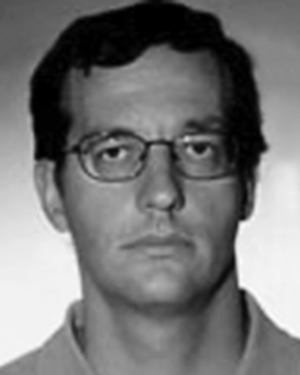
DIEGM, University of Udine, Udine, Italy
Luca Selmi (M'01) was born in 1961. He received the Ph.D. degree in electronic engineering from the University of Bologna, Bologna, Italy, in 1992.
In 2000, he became Full Professor of Electronics with the University of Udine, Udine, Italy. During 1989–1990, he was a Visiting Scientist with Hewlett Packard Microwave Technology Division, Santa Rosa, CA, where he worked on the characterization of high-frequency III-V devices...Show More
Luca Selmi (M'01) was born in 1961. He received the Ph.D. degree in electronic engineering from the University of Bologna, Bologna, Italy, in 1992.
In 2000, he became Full Professor of Electronics with the University of Udine, Udine, Italy. During 1989–1990, he was a Visiting Scientist with Hewlett Packard Microwave Technology Division, Santa Rosa, CA, where he worked on the characterization of high-frequency III-V devices...View more
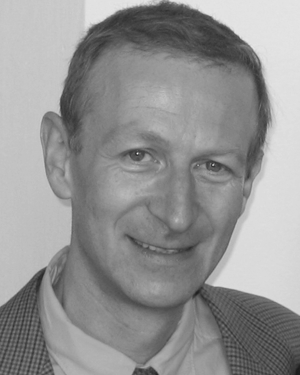
Infineon Technologies Austria AG, Villach, Austria
Marc Tiebout (S'90–M'93) was born in Asse, Belgium, in 1969. He received the M.S. degree in electrical and mechanical engineering from the Katholieke Universiteit Leuven, Leuven, Belgium, in 1992 and the Ph.D. degree in electrical engineering from the Technical University of Berlin, Berlin, Germany, in 2004.
In 1993, he joined Siemens AG, Corporate Research and Development, Microelectronics, Munich, Germany, designing anal...Show More
Marc Tiebout (S'90–M'93) was born in Asse, Belgium, in 1969. He received the M.S. degree in electrical and mechanical engineering from the Katholieke Universiteit Leuven, Leuven, Belgium, in 1992 and the Ph.D. degree in electrical engineering from the Technical University of Berlin, Berlin, Germany, in 2004.
In 1993, he joined Siemens AG, Corporate Research and Development, Microelectronics, Munich, Germany, designing anal...View more
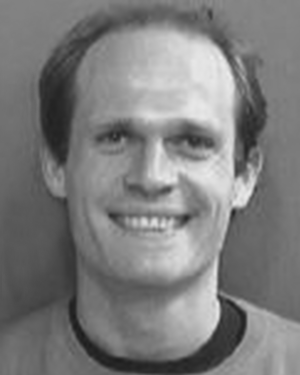
Inter University Micro Electronics Center, Leuven, Belgium
Bertrand Parvais was born in Brussels, Belgium, in 1977. He received the electrical engineering and Ph.D. degrees from the Université Catholique de Louvain, Louvain-la-Neuve, Belgium, in 2000 and 2004, respectively. His Ph.D. dissertation dealt with nonlinear device characterization and micromachining technology for communication circuits.
In 2005, he joined the Interuniversity Microelectronics Center (IMEC), Leuven, Belgi...Show More
Bertrand Parvais was born in Brussels, Belgium, in 1977. He received the electrical engineering and Ph.D. degrees from the Université Catholique de Louvain, Louvain-la-Neuve, Belgium, in 2000 and 2004, respectively. His Ph.D. dissertation dealt with nonlinear device characterization and micromachining technology for communication circuits.
In 2005, he joined the Interuniversity Microelectronics Center (IMEC), Leuven, Belgi...View more
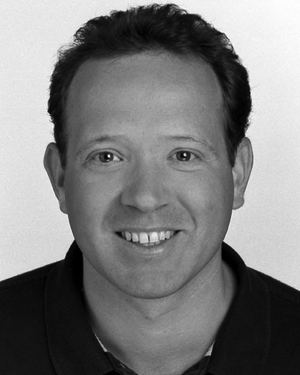
Infineon Technologies, Neubiberg, Germany
Domagoj Šiprak was born in Munich, Germany, in 1968. He received the M.S. degree in physics from the Technical University Munich (TUM), Munich, Germany, in 1996. He is currently working toward the Ph.D. degree in CMOS mm-wave design at Vrije Universiteit Brussel, Brussels, Belgium.
From 1996 to 2000, he was involved with circuit and technology interaction related topics at the semiconductor business group of Siemens AG, Re...Show More
Domagoj Šiprak was born in Munich, Germany, in 1968. He received the M.S. degree in physics from the Technical University Munich (TUM), Munich, Germany, in 1996. He is currently working toward the Ph.D. degree in CMOS mm-wave design at Vrije Universiteit Brussel, Brussels, Belgium.
From 1996 to 2000, he was involved with circuit and technology interaction related topics at the semiconductor business group of Siemens AG, Re...View more
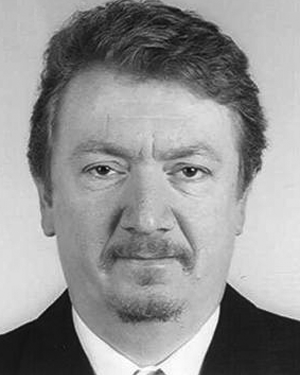
Infineon Technologies Austria AG, Villach, Austria
Gerhard Knoblinger (M'96–SM'07) was born in Upper Austria in 1968. He received the Dipl.-Ing. degree in technical physics from the Technical University of Graz, Graz, Austria, in 1996 and the Ph.D. degree from the Universitaet der Bundeswehr, Munich, Germany, in 2001.
From 1996 to 1998, he was with the Microelectronics Design Center of Siemens AG Austria, Villach. From 1998 to 2003, he was with the Process and Device Chara...Show More
Gerhard Knoblinger (M'96–SM'07) was born in Upper Austria in 1968. He received the Dipl.-Ing. degree in technical physics from the Technical University of Graz, Graz, Austria, in 1996 and the Ph.D. degree from the Universitaet der Bundeswehr, Munich, Germany, in 2001.
From 1996 to 1998, he was with the Microelectronics Design Center of Siemens AG Austria, Villach. From 1998 to 2003, he was with the Process and Device Chara...View more

DIEGM, University of Udine, Udine, Italy
Davide Ponton (S'09) was born in Udine, Italy, in 1981. He received the B.Sc. degree and the M.Sc. degree (summa cum laude) form the University of Udine, Udine, in 2004 and 2006, respectively, both in electronic engineering, where he is currently working toward the Ph.D. in electronic engineering.
His research interests include the design of RF building blocks with novel CMOS technologies.
Davide Ponton (S'09) was born in Udine, Italy, in 1981. He received the B.Sc. degree and the M.Sc. degree (summa cum laude) form the University of Udine, Udine, in 2004 and 2006, respectively, both in electronic engineering, where he is currently working toward the Ph.D. in electronic engineering.
His research interests include the design of RF building blocks with novel CMOS technologies.View more

DIEGM, University of Udine, Udine, Italy
Pierpaolo Palestri (M'05) received the Laurea degree (summa cum laude) from the University of Bologna, Italy, in 1998, and the Ph.D. degree from the University of Udine, Udine, Italy, in 2003, both in electronic engineering.
In 1998, he joined the Department of Electrical, Management, and Mechanical Engineering, University of Udine, as a Research Assistant in the field of device simulation. From July 2000 to September 2001, he held a postdoctoral position with Bell Laboratories, Lucent Technologies (now Agere Systems), Murray Hill, NJ, where he worked on high-speed silicon-germanium bipolar technologies. In October 2001, he became Assistant Professor and in November 2005 Associate Professor at the University of Udine. His research interests include the modeling of carrier transport in nanoscale devices, the design of RF building blocks, and the simulation of hot-carrier and tunneling phenomena in scaled MOSFETs and nonvolatile-memory cells.
Pierpaolo Palestri (M'05) received the Laurea degree (summa cum laude) from the University of Bologna, Italy, in 1998, and the Ph.D. degree from the University of Udine, Udine, Italy, in 2003, both in electronic engineering.
In 1998, he joined the Department of Electrical, Management, and Mechanical Engineering, University of Udine, as a Research Assistant in the field of device simulation. From July 2000 to September 2001, he held a postdoctoral position with Bell Laboratories, Lucent Technologies (now Agere Systems), Murray Hill, NJ, where he worked on high-speed silicon-germanium bipolar technologies. In October 2001, he became Assistant Professor and in November 2005 Associate Professor at the University of Udine. His research interests include the modeling of carrier transport in nanoscale devices, the design of RF building blocks, and the simulation of hot-carrier and tunneling phenomena in scaled MOSFETs and nonvolatile-memory cells.View more

DIEGM, University of Udine, Udine, Italy
David Esseni (S'98–M'00–SM'06) received the Laurea degree and the Ph.D. degree in electronic engineering from the University of Bologna, Bologna, Italy, in 1994 and 1998, respectively.
In 2000, he was a Visiting Scientist with Bell Labs—Lucent Technologies, Murray Hill, NJ. Since 2005, he has been an Associate Professor with the University of Udine, Udine, Italy. His research interests are mainly focussed on the characterization, modelling and reliability the of MOS transistors and nonvolatile memories (NVMs). In the field of NVM, he has worked on the low-voltage and substrate-enhanced hot electron phenomena and on several aspects of Flash EEPROM Memories, including innovative programming techniques and reliability issues related to the statistical distribution of the stress-induced-leakage-current. Since 2000, he has been involved in the field of advanced or innovative CMOS devices. In particular he has experimentally investigated low-field mobility in ultrathin SOI MOS transistors and then started an activity of semiclassical transport modelling in advanced n-MOS and p-MOS transistors. In this field, his research interests also include quantization models beyond the effective mass approximation as well as modeling and characterization of stress effects on the CMOS technologies.
Dr. Esseni served as a Member of the Technical Committee of the International Electron Devices Meeting (IEDM) in 2003 and 2004, is currently in the technical committee of the European Solid-State Device Research Conference (ESSDERC) and the International Reliability Physics (IRPS), and is a member of the Technology Computer Aided Design Committee of the Electron Devices Society (EDS). He is Associate Editor of the IEEE Transactions on Electron Devices(TED) and has been one of the Guest Editors of a Special Issue of the IEEE TED devoted to simulation and modeling of nanoelectronics devices.
David Esseni (S'98–M'00–SM'06) received the Laurea degree and the Ph.D. degree in electronic engineering from the University of Bologna, Bologna, Italy, in 1994 and 1998, respectively.
In 2000, he was a Visiting Scientist with Bell Labs—Lucent Technologies, Murray Hill, NJ. Since 2005, he has been an Associate Professor with the University of Udine, Udine, Italy. His research interests are mainly focussed on the characterization, modelling and reliability the of MOS transistors and nonvolatile memories (NVMs). In the field of NVM, he has worked on the low-voltage and substrate-enhanced hot electron phenomena and on several aspects of Flash EEPROM Memories, including innovative programming techniques and reliability issues related to the statistical distribution of the stress-induced-leakage-current. Since 2000, he has been involved in the field of advanced or innovative CMOS devices. In particular he has experimentally investigated low-field mobility in ultrathin SOI MOS transistors and then started an activity of semiclassical transport modelling in advanced n-MOS and p-MOS transistors. In this field, his research interests also include quantization models beyond the effective mass approximation as well as modeling and characterization of stress effects on the CMOS technologies.
Dr. Esseni served as a Member of the Technical Committee of the International Electron Devices Meeting (IEDM) in 2003 and 2004, is currently in the technical committee of the European Solid-State Device Research Conference (ESSDERC) and the International Reliability Physics (IRPS), and is a member of the Technology Computer Aided Design Committee of the Electron Devices Society (EDS). He is Associate Editor of the IEEE Transactions on Electron Devices(TED) and has been one of the Guest Editors of a Special Issue of the IEEE TED devoted to simulation and modeling of nanoelectronics devices.View more

DIEGM, University of Udine, Udine, Italy
Luca Selmi (M'01) was born in 1961. He received the Ph.D. degree in electronic engineering from the University of Bologna, Bologna, Italy, in 1992.
In 2000, he became Full Professor of Electronics with the University of Udine, Udine, Italy. During 1989–1990, he was a Visiting Scientist with Hewlett Packard Microwave Technology Division, Santa Rosa, CA, where he worked on the characterization of high-frequency III-V devices and the design of RF integrated circuits. His research interests include characterization, modeling and simulation of silicon devices, with emphasis on transport phenomena, Monte Carlo transport simulation techniques and hot carrier effects in MOSFETs, silicon bipolars and nonvolatile memory (NVM) cells, quasi-ballistic transport in nanoMOSFETs, CHE and CHISEL injection in MOSFETs and NVM cells, hot electron effects at low voltages, gate leakage currents and reliability of ultra thin oxides, and bulk and SOI MOSFET scaling in the deca-nanometer range. Recently, his research interests extended to the design of RF circuits in advanced CMOS technologies. He has coauthored approximately 150 papers on refereed international journals and proceedings of international conferences, including approximately 30 papers at the International Electron Devices Meeting (IEDM), two of which were invited, and one book chapter on Flash memory cells.
Dr. Selmi is a member of the IEEE Electron Device Society. In 1995–1996 and 2001–2002, he was a member of the technical subcommittees of the IEEE International Electron Device Meeting (IEDM). He is TPC member of the Insulating Films on Semiconductors Conference (INFOS) and of the European Solid State Research Conference (ESSDERC).
Luca Selmi (M'01) was born in 1961. He received the Ph.D. degree in electronic engineering from the University of Bologna, Bologna, Italy, in 1992.
In 2000, he became Full Professor of Electronics with the University of Udine, Udine, Italy. During 1989–1990, he was a Visiting Scientist with Hewlett Packard Microwave Technology Division, Santa Rosa, CA, where he worked on the characterization of high-frequency III-V devices and the design of RF integrated circuits. His research interests include characterization, modeling and simulation of silicon devices, with emphasis on transport phenomena, Monte Carlo transport simulation techniques and hot carrier effects in MOSFETs, silicon bipolars and nonvolatile memory (NVM) cells, quasi-ballistic transport in nanoMOSFETs, CHE and CHISEL injection in MOSFETs and NVM cells, hot electron effects at low voltages, gate leakage currents and reliability of ultra thin oxides, and bulk and SOI MOSFET scaling in the deca-nanometer range. Recently, his research interests extended to the design of RF circuits in advanced CMOS technologies. He has coauthored approximately 150 papers on refereed international journals and proceedings of international conferences, including approximately 30 papers at the International Electron Devices Meeting (IEDM), two of which were invited, and one book chapter on Flash memory cells.
Dr. Selmi is a member of the IEEE Electron Device Society. In 1995–1996 and 2001–2002, he was a member of the technical subcommittees of the IEEE International Electron Device Meeting (IEDM). He is TPC member of the Insulating Films on Semiconductors Conference (INFOS) and of the European Solid State Research Conference (ESSDERC).View more

Infineon Technologies Austria AG, Villach, Austria
Marc Tiebout (S'90–M'93) was born in Asse, Belgium, in 1969. He received the M.S. degree in electrical and mechanical engineering from the Katholieke Universiteit Leuven, Leuven, Belgium, in 1992 and the Ph.D. degree in electrical engineering from the Technical University of Berlin, Berlin, Germany, in 2004.
In 1993, he joined Siemens AG, Corporate Research and Development, Microelectronics, Munich, Germany, designing analog integrated circuits in CMOS and BiCMOS technologies. In 1997, he started the design of radio frequency devices and building blocks in sub-\mu{\hbox {m}} CMOS technologies. From 1999 to 2005, he was with Infineon Technologies AG, Munich, Germany, where he worked on RFCMOS circuits and transceivers for cellular wireless communication products and conducted highest frequency RFCMOS research for 17- and 24-GHz applications. Since 2006, he is with Infineon Technologies AG Austria, Villach, where his recent work includes Wimedia-UWB (system architect) and Radar applications. He has authored and coauthored more than 30 IEEE publications and holds more than 10 patents. His main interest goes into low-power high-frequency circuits and systems in CMOS.
Dr. Tiebout serves as a member of the technical program committee of ISSCC and ESSCIRC.
Marc Tiebout (S'90–M'93) was born in Asse, Belgium, in 1969. He received the M.S. degree in electrical and mechanical engineering from the Katholieke Universiteit Leuven, Leuven, Belgium, in 1992 and the Ph.D. degree in electrical engineering from the Technical University of Berlin, Berlin, Germany, in 2004.
In 1993, he joined Siemens AG, Corporate Research and Development, Microelectronics, Munich, Germany, designing analog integrated circuits in CMOS and BiCMOS technologies. In 1997, he started the design of radio frequency devices and building blocks in sub-\mu{\hbox {m}} CMOS technologies. From 1999 to 2005, he was with Infineon Technologies AG, Munich, Germany, where he worked on RFCMOS circuits and transceivers for cellular wireless communication products and conducted highest frequency RFCMOS research for 17- and 24-GHz applications. Since 2006, he is with Infineon Technologies AG Austria, Villach, where his recent work includes Wimedia-UWB (system architect) and Radar applications. He has authored and coauthored more than 30 IEEE publications and holds more than 10 patents. His main interest goes into low-power high-frequency circuits and systems in CMOS.
Dr. Tiebout serves as a member of the technical program committee of ISSCC and ESSCIRC.View more

Inter University Micro Electronics Center, Leuven, Belgium
Bertrand Parvais was born in Brussels, Belgium, in 1977. He received the electrical engineering and Ph.D. degrees from the Université Catholique de Louvain, Louvain-la-Neuve, Belgium, in 2000 and 2004, respectively. His Ph.D. dissertation dealt with nonlinear device characterization and micromachining technology for communication circuits.
In 2005, he joined the Interuniversity Microelectronics Center (IMEC), Leuven, Belgium, where he worked as a device engineer until 2008, focusing on the characterization and modeling of field-effect transistors in advanced silicon technologies for analog and RF applications. He is currently involved in the design of 60-GHz CMOS circuits at IMEC. He has authored and coauthored more than 40 publications in international peer-reviewed journals and conferences.
Bertrand Parvais was born in Brussels, Belgium, in 1977. He received the electrical engineering and Ph.D. degrees from the Université Catholique de Louvain, Louvain-la-Neuve, Belgium, in 2000 and 2004, respectively. His Ph.D. dissertation dealt with nonlinear device characterization and micromachining technology for communication circuits.
In 2005, he joined the Interuniversity Microelectronics Center (IMEC), Leuven, Belgium, where he worked as a device engineer until 2008, focusing on the characterization and modeling of field-effect transistors in advanced silicon technologies for analog and RF applications. He is currently involved in the design of 60-GHz CMOS circuits at IMEC. He has authored and coauthored more than 40 publications in international peer-reviewed journals and conferences.View more

Infineon Technologies, Neubiberg, Germany
Domagoj Šiprak was born in Munich, Germany, in 1968. He received the M.S. degree in physics from the Technical University Munich (TUM), Munich, Germany, in 1996. He is currently working toward the Ph.D. degree in CMOS mm-wave design at Vrije Universiteit Brussel, Brussels, Belgium.
From 1996 to 2000, he was involved with circuit and technology interaction related topics at the semiconductor business group of Siemens AG, Regensburg, Germany. In 2000, he joined the device modeling group of Infineon Technologies AG, Neubiberg, Germany, working on RF CMOS device models and model hardware correlation.
Domagoj Šiprak was born in Munich, Germany, in 1968. He received the M.S. degree in physics from the Technical University Munich (TUM), Munich, Germany, in 1996. He is currently working toward the Ph.D. degree in CMOS mm-wave design at Vrije Universiteit Brussel, Brussels, Belgium.
From 1996 to 2000, he was involved with circuit and technology interaction related topics at the semiconductor business group of Siemens AG, Regensburg, Germany. In 2000, he joined the device modeling group of Infineon Technologies AG, Neubiberg, Germany, working on RF CMOS device models and model hardware correlation.View more

Infineon Technologies Austria AG, Villach, Austria
Gerhard Knoblinger (M'96–SM'07) was born in Upper Austria in 1968. He received the Dipl.-Ing. degree in technical physics from the Technical University of Graz, Graz, Austria, in 1996 and the Ph.D. degree from the Universitaet der Bundeswehr, Munich, Germany, in 2001.
From 1996 to 1998, he was with the Microelectronics Design Center of Siemens AG Austria, Villach. From 1998 to 2003, he was with the Process and Device Characterization Group of Siemens AG Germany, now Infineon Technologies. In 2003, he moved to the Analog Technology and Exploration department in the Infineon Design Center Villach. His research interests are design and simulation of analog, mixed-signal and RF-CMOS circuits in advanced ultra deep submicron CMOS and SOI technologies, high-frequency and noise characterization of deep-submicron CMOS devices, and modeling of inductors and varactors.
Gerhard Knoblinger (M'96–SM'07) was born in Upper Austria in 1968. He received the Dipl.-Ing. degree in technical physics from the Technical University of Graz, Graz, Austria, in 1996 and the Ph.D. degree from the Universitaet der Bundeswehr, Munich, Germany, in 2001.
From 1996 to 1998, he was with the Microelectronics Design Center of Siemens AG Austria, Villach. From 1998 to 2003, he was with the Process and Device Characterization Group of Siemens AG Germany, now Infineon Technologies. In 2003, he moved to the Analog Technology and Exploration department in the Infineon Design Center Villach. His research interests are design and simulation of analog, mixed-signal and RF-CMOS circuits in advanced ultra deep submicron CMOS and SOI technologies, high-frequency and noise characterization of deep-submicron CMOS devices, and modeling of inductors and varactors.View more


